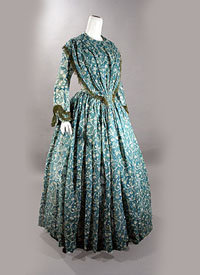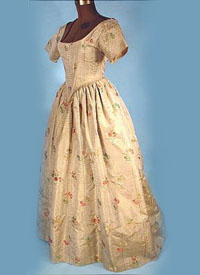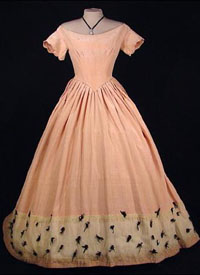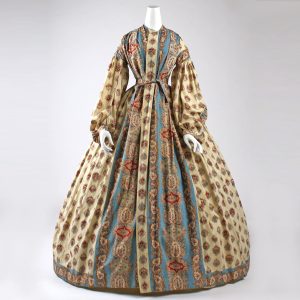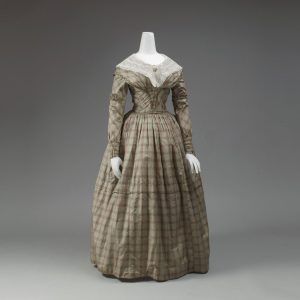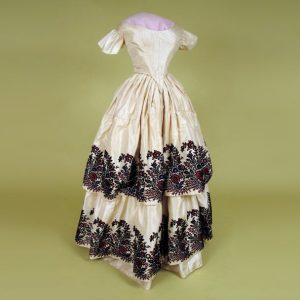The Gothic era arrived, and fashion lines wilted into drooping ringlets and dragging skirts. Sleeves lost their fullness and became fitted, and shoulders were extended below their natural lines. Skirt hems lowered to the floor. Necklines were generally cut high for day wear and wide for the evening. The skirt became very domed in silhouette, requiring yet more petticoats to achieve the desired shape. Tucks and pleats were used to emphasize this new line. Colors shifted to darker tones, and solid-color fabrics were more in tune with the new solemnity.
In mid-century, skirts become even fuller, with horizontal flounces or tucks added to the base skirt to give it even greater width and volume. Lines shifted from the vertical to the horizontal—assisted by shorter, wider bodices. A new triangular, cone-shaped silhouette emerged, featuring new pagoda sleeves.
Prints and patterns came to the fore as these substantial expanses of fabric cried out for visual interest, which was provided by large plaids and border prints.
Written by The Vintage Fashion Guild
